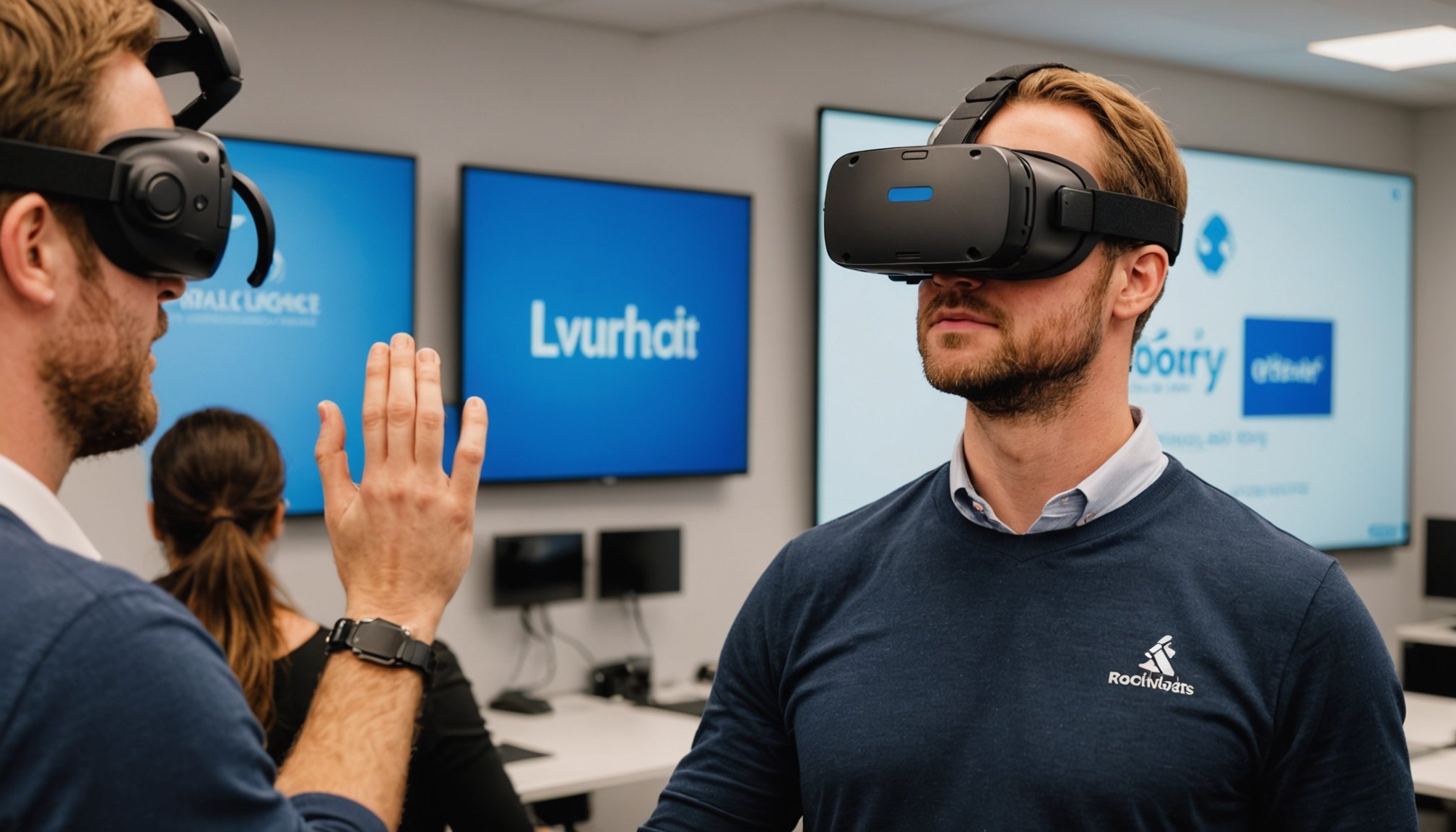Introduction to Virtual Reality in Real Estate
The realm of virtual reality has significantly reshaped the landscape of real estate marketing. By immersing potential buyers in a simulated yet incredibly lifelike property environment, it allows them to experience spaces as if they were physically present, right from their devices.
Virtual reality offers revolutionary property showcases. In contrast to traditional methods, immersive tours transcend physical limitations, enabling detailed exploration of properties from anywhere in the world. This technology becomes invaluable, especially when geographic constraints hinder in-person visits.
Also read : Exploring Insurance Considerations for UK Properties Featuring Green Roofs: What You Need to Know
Why is VR gaining such traction in real estate? Firstly, it dramatically enhances buyer engagement. Prospective clients can visualize their lives within the space, fostering emotional connections previously unattainable through static images or videos. Such interactions reduce uncertainties related to spatial perception.
Moreover, virtual reality presents a more comprehensive understanding of properties. By offering 360-degree views and interactive features, buyers can examine every nook and cranny, ensuring transparency and satisfaction. The sensory experience builds confidence and aids informed decision-making.
Topic to read : How the Digital Nomad Movement is Transforming Brighton’s Short-Term Rental Scene
Finally, VR in real estate marketing is drawing significant attention due to its ability to convey ambiance and potential with unparalleled effectiveness, marking a pivotal shift in how properties are presented and perceived. This evolution represents a promising future for enhanced buyer experiences and streamlined transactions.
Benefits of Using Virtual Reality for Real Estate Listings
Virtual Reality (VR) is reshaping the real estate industry by enhancing property visualization. It allows potential buyers to access a 3D representation of a property from the comfort of their homes, making it easier to evaluate spaces. This immersive experience offers a more comprehensive insight than traditional photos or videos, capturing intricate details and spatial arrangements.
One of the greatest advantages of VR is its ability to deliver increased property reach and accessibility. Buyers no longer need to travel to multiple locations to make informed decisions. Instead, they can virtually tour several properties in a single afternoon, broadening the range of potential buyers.
Moreover, VR significantly improves the buying decision process by boosting client engagement. Immersive experiences help potential clients envision themselves living in the space, fostering an emotional connection that often influences purchasing decisions. The persuasive power of seeing and experiencing the property layout in VR often translates into accelerated and more confident buying decisions.
Overall, VR is an effective tool for real estate agents aiming to attract and engage prospective buyers. By leveraging these significant benefits, agents can enhance their market presence and facilitate smoother transactions.
Successful Case Studies in Liverpool
Exploring the transformation VR has introduced in Liverpool real estate, these case studies highlight innovative marketing strategies through virtual reality’s case implementation.
Case Study 1: High-End Residential Listings
In the luxury property sector, VR has revolutionised how high-end residential listings are presented. Agents began implementing VR technologies to create immersive showcases that went beyond simple photo and video presentations. The result? Viewing statistics soared as potential buyers engaged with these virtual tours. The fluid transition between rooms and the realistic depiction of luxury amenities allowed viewers to form a more personal connection to the properties. Consequently, there was a noticeable uptick in sales success, proving VR’s worth in making luxury listings more tangible and appealing.
Case Study 2: Commercial Real Estate
Utilisation of VR in commercial properties has shifted traditional client interaction. By presenting expansive spaces and intricate layouts digitally, agents provided potential tenants and buyers with accurate previews without a physical visit. There was a remarkable enhancement in client feedback; virtual tours allowed clients to express preferences and concerns, resulting in more tailored and efficient adjustments to property presentations. This innovative approach led to an increase in successful transactions.
Case Study 3: Affordable Housing Initiatives
VR in promoting affordable housing options has empowered stakeholders to showcase potential homes more compellingly. Metrics of success indicated increased community engagement, as residents could explore homes like never before.
Practical Tips for Implementing VR in Real Estate
Implementing VR in real estate not only enhances marketing strategies but can also revolutionise how properties are presented. To start, there are several essential tools and software that cater to real estate needs. High-quality 360-degree cameras capture immersive images, while platforms like Matterport offer comprehensive solutions for creating virtual tours. These tools allow potential buyers to engage with listings uniquely.
When integrating VR into marketing campaigns, it is crucial to identify the property’s standout features and highlight these in the virtual experience. This strategy ensures viewers feel an emotional connection, even from afar. Additionally, incorporating interactive elements such as clickable hotspots or background audio can enrich the virtual tour experience.
Training staff and agents effectively is another important aspect. Start by organising workshops that educate them on how to use VR technology. Implementing scenarios where they practice presenting properties virtually can build their confidence. Encourage them to explore different VR real estate tools to discover which ones resonate most with their personal style.
By nurturing a culture of innovation and openness to new technologies, real estate companies can stay ahead of the curve. In embracing VR, they position themselves to offer clients enhanced services that make property exploring both entertaining and efficient.
Future Trends in Virtual Reality and Real Estate
As we venture into the future, VR trends are reshaping the real estate landscape, offering new dimensions to property marketing. VR technology is not just a fleeting innovation but a cornerstone for the future of real estate, providing immersive experiences and compelling visual narratives that can transcend geographical boundaries.
Predictions for the evolution of VR include seamless integration with Artificial Intelligence (AI) and Augmented Reality (AR). AI can enhance VR applications by analysing user preferences, tailoring experiences, and predicting market trends. Meanwhile, AR complements VR by overlaying digital enhancements to the physical world, broadening the scope of virtual tours and interactive viewings.
The potential for VR extends beyond local markets like Liverpool. It enables global property marketing, allowing buyers from Tokyo to New York to explore homes as if they were on-site. This broad reach can redefine how international property investments are conducted, making transactions more enticing and accessible.
Using VR in real estate means buyers can make informed decisions confidently, benefiting from a new era where technology significantly elevates traditional property marketing strategies. As these technologies advance, the future of real estate becomes not just a vision but a vivid, accessible reality.











